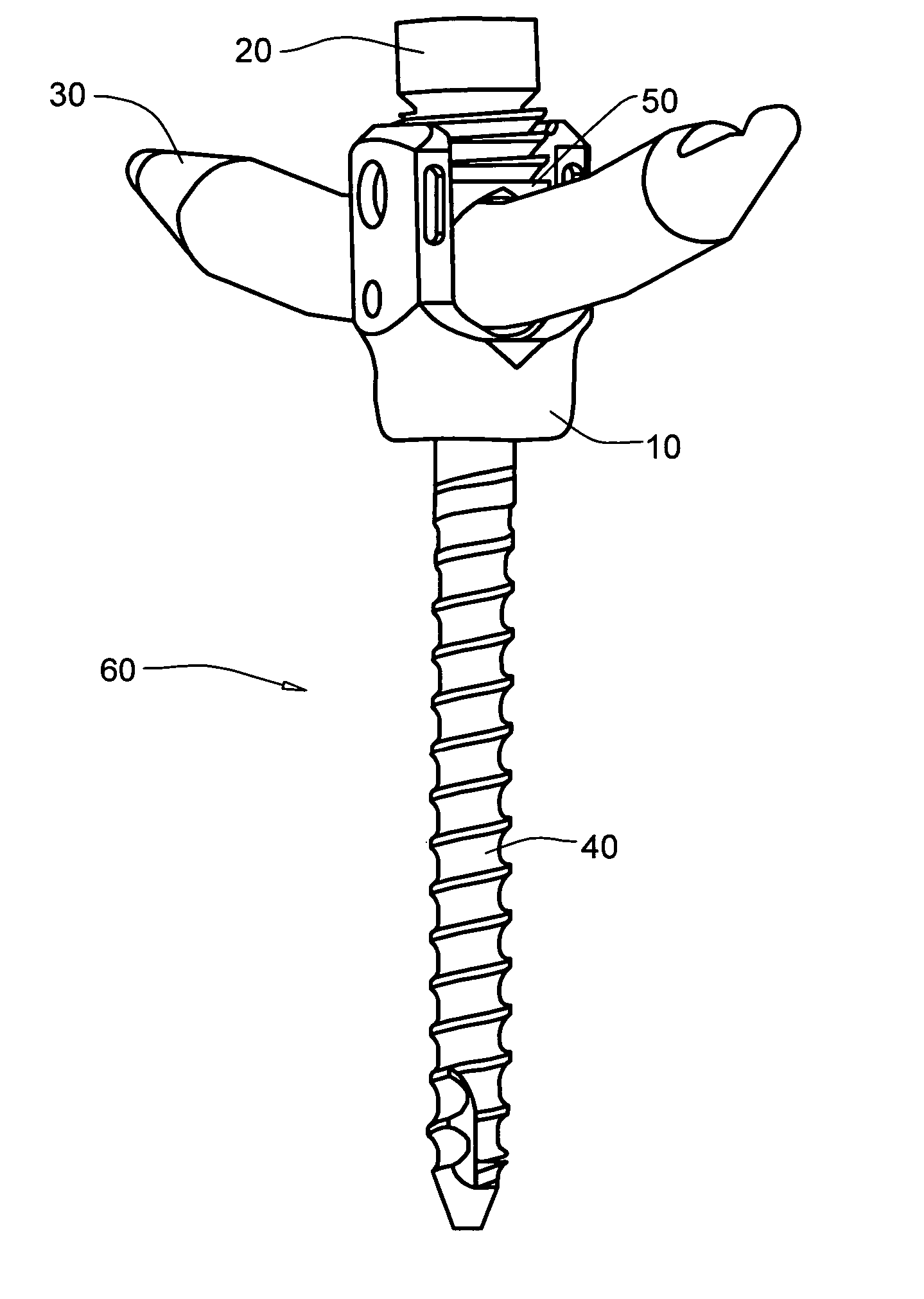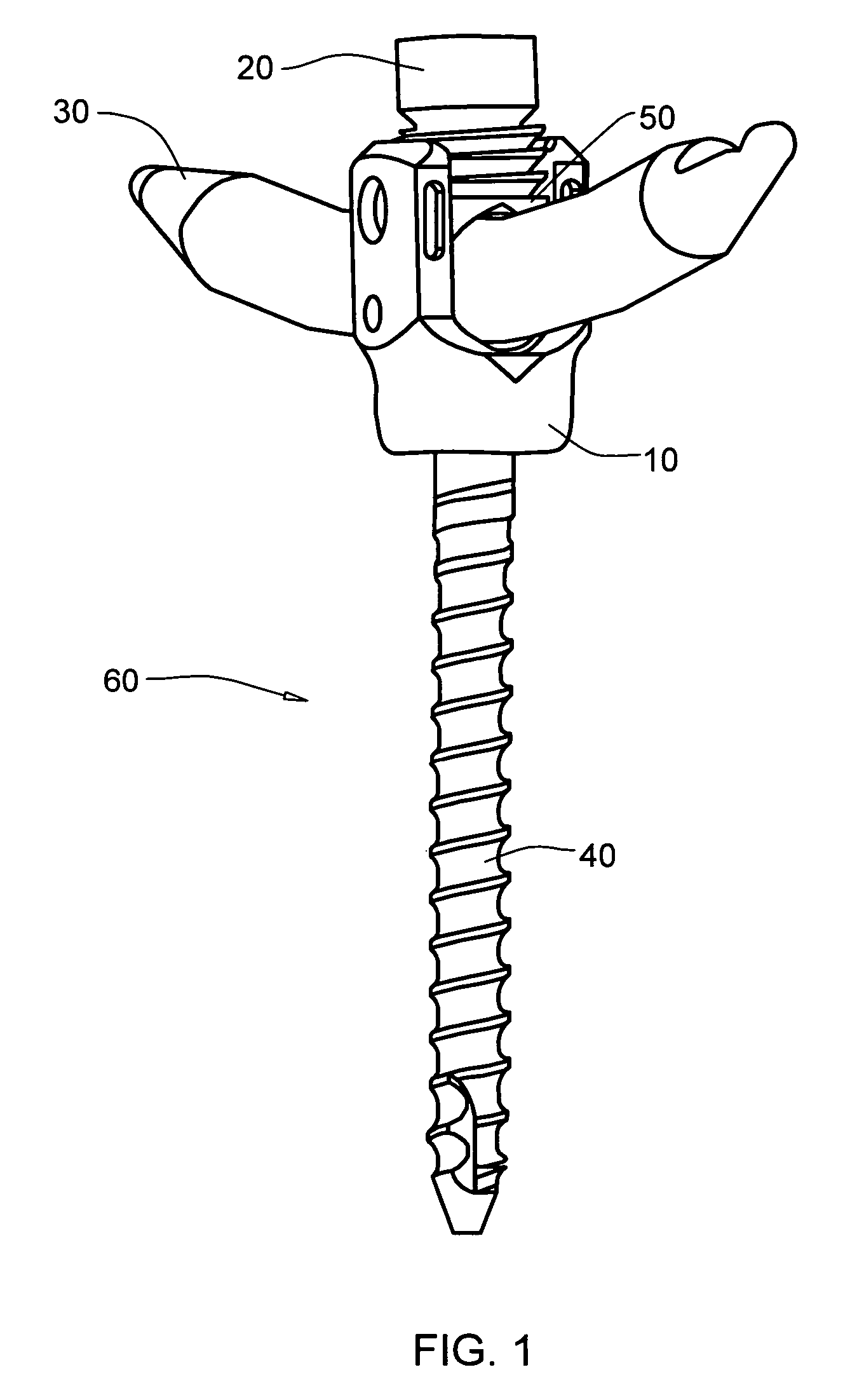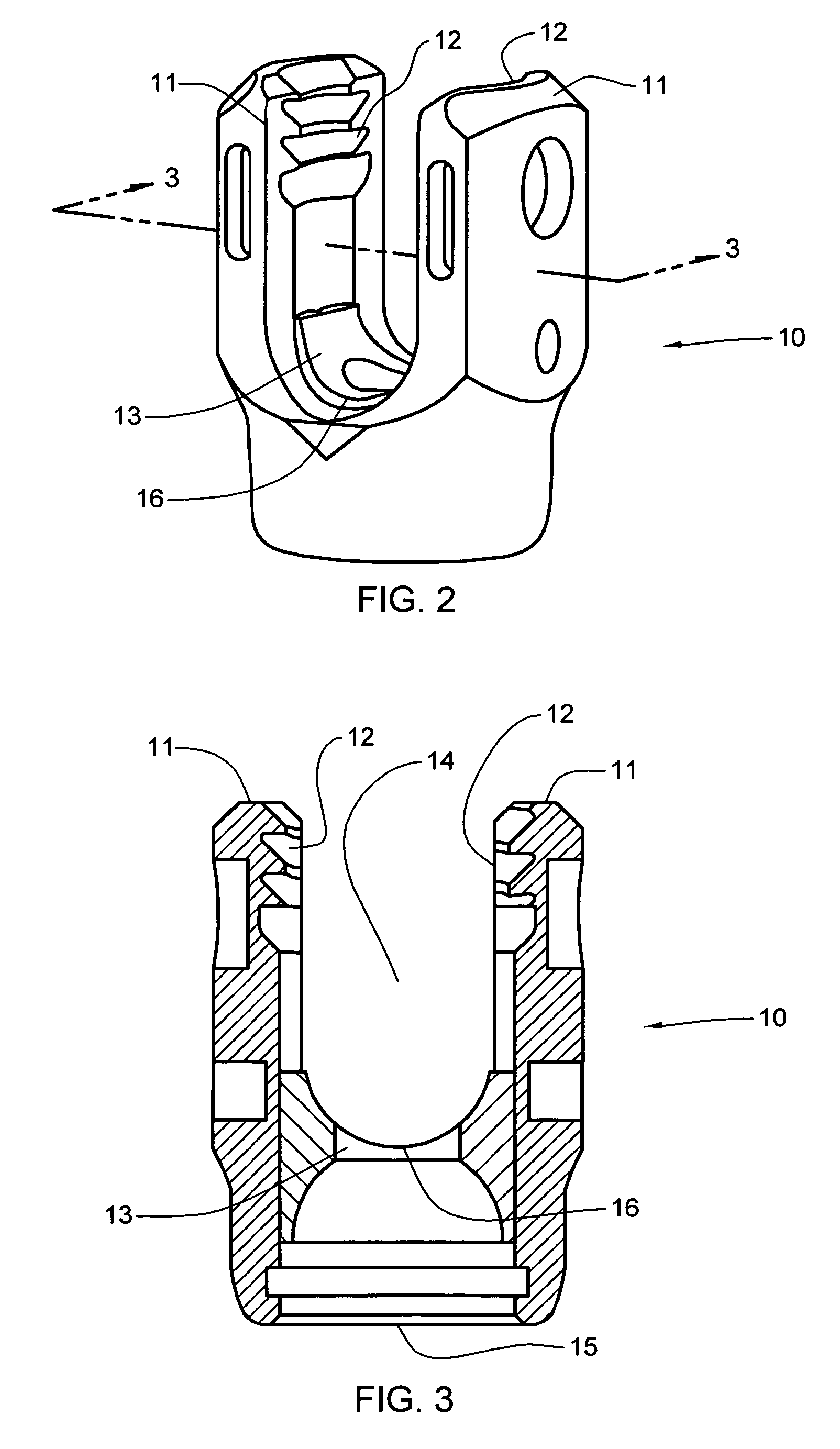Locking device and method, for use in a bone stabilization system, employing a set screw member and deformable saddle member
a locking device and bone stabilization technology, applied in the field of orthopaedic implants, can solve the problems of increasing reducing the stress level realized within the secured stabilization member, and many locking mechanisms utilized in the bone stabilization system potentially causing component failure, so as to reduce the creation of surface stress risers, increase the potential for post-operative failure, and reduce the stress realized in the stabilization member
- Summary
- Abstract
- Description
- Claims
- Application Information
AI Technical Summary
Benefits of technology
Problems solved by technology
Method used
Image
Examples
Embodiment Construction
[0030] As depicted in FIG. 1, the general arrangement of a bone stabilization system 60, in accordance with an aspect of the present invention, includes a coupling mechanism 10, a locking device, comprising a set screw member 20 and a saddle member 50, a stabilization member 30, and a bone anchor 40. When used in the spine to secure multiple levels of the spinal column, a bone anchor 40 is placed within an individual vertebrae and a coupling mechanism 10 is then attached to each implanted bone fastener 40. Following placement of multiple bone anchors and coupling mechanisms, an appropriately dimensioned stabilization member 30, which spans the levels of the affected vertebral region, is placed within the coupling mechanisms 10 and secured in place employing multiple locking devices. As noted, the locking device includes set screw member 20 and saddle member 50. When the locking device is in use stabilization member 30 is frictionally held in place between coupling mechanism 10 and t...
PUM
 Login to View More
Login to View More Abstract
Description
Claims
Application Information
 Login to View More
Login to View More - R&D
- Intellectual Property
- Life Sciences
- Materials
- Tech Scout
- Unparalleled Data Quality
- Higher Quality Content
- 60% Fewer Hallucinations
Browse by: Latest US Patents, China's latest patents, Technical Efficacy Thesaurus, Application Domain, Technology Topic, Popular Technical Reports.
© 2025 PatSnap. All rights reserved.Legal|Privacy policy|Modern Slavery Act Transparency Statement|Sitemap|About US| Contact US: help@patsnap.com



